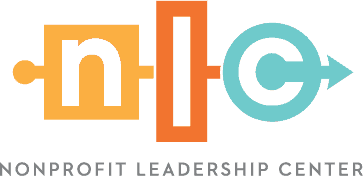Why is it important to have a DEI committee? What does a DEI committee do, and what are the DEI committee roles and responsibilities? Former Nonprofit Leadership Center Board Member and DEI Committee Chair Christopher Johnson answers these questions and more.
Diversity, equity and inclusion (DEI) and concepts like DEI committees and DEI statements have become common topics on social media and inside boardrooms across America. But to truly embrace an authentic culture of DEI, organizations must understand why having a DEI committee is important and what it exists to authentically achieve.
In 2020, the Nonprofit Leadership Center (NLC) established a DEI committee to ensure all its work is viewed through a DEI lens. The committee evaluates everything from employee policies and program development to hiring and decision-making. This article offers advice based on what NLC’s DEI committee has learned to assist more nonprofits in moving their DEI commitments forward.
Why Have a DEI Committee?
Addressing social issues in the communities we serve is the heart of nonprofit work. Our communities are diverse, composed of many unique humans with different cultural backgrounds, ethnicities, races and experiences. Having a DEI committee helps ensure the diversity and reality of our communities are reflected in every aspect of our missions. While DEI committees will be different at every organization, the central purpose is the same — to serve as an authentic and proactive filter to assess policies, procedures and programs.
For example, the NLC DEI committee served as a filter in reviewing the employee handbook. We assessed the paid holiday policy and provided Juneteenth as a new paid holiday while adding two floating holidays so staff can celebrate the occasions important to their cultures and beliefs.
Successful organizations understand that the spirit of DEI doesn’t live with the DEI committee. The committee ultimately serves to help all staff and stakeholders become true DEI champions.
Who Should Be on Your DEI Committee?
As you structure your DEI committee, start by keeping these three things in mind:
- Bigger is not better: Keep your DEI committee small and manageable, especially at first, so you can be intentional about the work. At NLC, we started our committee with four board members and one staff member. Having an odd number of members is helpful when voting or decision-making may be required. While a smaller DEI committee is ideal, be sure to create a clear path in which other board members and staff can communicate with the committee, raise topics and provide feedback to ensure all voices are heard.
- Think beyond your board: Look for leaders with diverse backgrounds and a genuine interest and passion for DEI work. Because 84% of nonprofit boards don’t have any leaders of color (BoardSource), it may be important to think beyond your board. If your organization lacks a diverse leadership team, consider inviting a partner or close stakeholder to join or contribute to the group to ensure all the voices you want and need are reflected.
- Look for long-haulers: A DEI committee is called a committee for a reason. It is not a task force with a beginning, middle and end to a project. DEI is an enduring value system that doesn’t have a finish line. The work must be intentional, continuous and ever-evolving. Look for members who are committed to long-term, significant engagement.
Roles and Responsibilities: What Does a DEI Committee Do?
A DEI committee will look different at every organization, but there are several common DEI committee roles and responsibilities:
- Identify what the committee wants to achieve and why: Being intentional about your purpose and progress is essential. Based on your nonprofit’s mission, how does or should the presence of a DEI committee impact or improve your work? Why are you creating this committee?
- Assess your organization’s current DEI efforts: To help your committee set goals and objectives, conduct an organizational assessment. At NLC, our assessment included analyzing our board’s composition, available programs, employee policies and more. An assessment offers a strong starting point from which to set priorities.
- Create your nonprofit’s DEI statement: This is a set of beliefs that guides everything your organization does. It should include both your convictions and commitments and come to life not just as words but as actions. You can see NLC’s diversity statement here.
- Set goals, objectives and key milestones for the committee and your nonprofit. Based on your assessment, begin prioritizing your commitments and get to work. But start small — don’t try to do 10 things at once. Remember, this work doesn’t happen overnight, nor does it have a finish line.
- Meet regularly. Your DEI committee should meet regularly to ensure this work remains a top priority for the organization. At NLC, our DEI committee meets once between every board meeting, typically monthly. Additionally, stay connected via email to share information and educate each other. Provide reports at each board meeting on your progress, and bring new learnings to the larger group of leaders.
READ NEXT: Addressing Unconscious Bias in the Workplace
How to Measure Your DEI Committee’s Impact
There are many ways to benchmark your DEI committee’s progress.
First, in your internal and external surveys, be sure to capture if your audience identifies you as a DEI champion. To what extent do they agree or disagree with statements related to your DEI commitments?
Another way to benchmark and measure progress is through an assessment like the Intercultural Development Inventory® (IDI®). It assesses an organization’s intercultural competence — its capability to shift cultural perspective and appropriately adapt behavior to cultural differences and commonalities. The IDI consists of a 50-item online questionnaire that can be completed in 15–20 minutes and identifies individual and organizational gaps to create a plan for your organization.
The Nonprofit Leadership Center’s Program Director, Meriel Martínez, is a certified IDI facilitator. To learn more about how to schedule an IDI assessment for your organization, contact Meriel at mmartinez@nlctb.org.
The key is to move with intent. It’s not just enough to define your commitment; you must carry it forward with authenticity and action.
About the Nonprofit Leadership Center’s DEI Committee and DEI Statement
The Nonprofit Leadership Center established its DEI committee in 2020, chaired by Christopher Johnson, senior social responsibility specialist at Mosaic. Additional members include NLC board members Cheryl Brown, Michelle Hamilton and Luis R. Visot. NLC approved its current DEI statement in September 2021, which is as follows:
The Nonprofit Leadership Center is fully committed to leading by example in advancing diversity, equity and inclusion principles in the nonprofit sector. We are taking intentional steps, guided by these convictions:
- We believe nonprofit leaders should reflect the communities they serve and that DEI practices make meaningful representation possible.
- We believe knowledge and talent are foundational to developing a mindset that infuses DEI principles in an organization’s culture.
- We believe NLC is well-positioned to partner with and support nonprofits in their DEI efforts.
As a reflection of our commitment to foundational and evolving DEI practices, NLC will:
- Make DEI part of its DNA.
- Be a champion to advance diverse leadership and encourage the nonprofit community to do the same for more effective representation of the communities they serve.
- Be an advocate for embracing uniqueness with the expectation of fair and equitable treatment while ensuring a sense of value and belonging for all.
- Be aware of both the internal resources NLC can harness and the spaces where it will need to bring in external knowledge and expertise.
- Commit to a plan of continuous learning to advance its understanding and the manifestation of the principles of DEI.
- Using data, include feedback from sources such as NLC students, the community, and stakeholders to inform its course of action annually.Form
Learn How to Craft Your DEI Statement & Put It Into Action
How should your nonprofit explore and articulate its commitment to DEI? [HINT: It’s more than just having a DEI statement]
During our upcoming course on April 25, Going Beyond a DEI Statement: Strengthening Your Organization’s Commitment to Diversity, Equity & Inclusion, you will answer this question, assess your organization’s DEI practices and leave with an understanding of how to begin articulating your nonprofit’s commitment.


